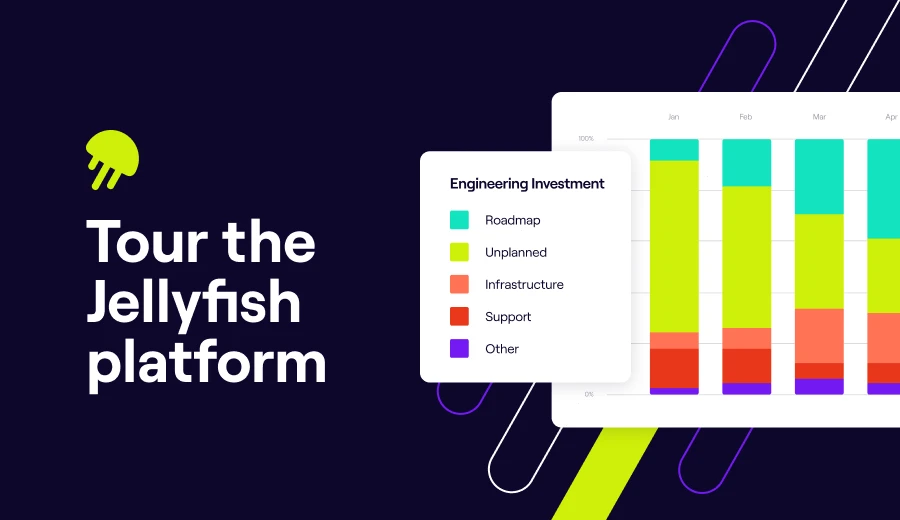What is Digital Transformation?
Digital transformation means integrating digital tech into all aspects of a business. It invariably involves a fundamental change in how your business operates, with digital technology becoming essential rather than incidental. It paves the way for the creation of novel value propositions, new business models, and the re-imagining of operational processes.
Digitally-transformed businesses, often characterized by their ability to adapt to the latest technological trends, are highly regarded in the modern corporate world. Fueled chiefly by the unprecedented acceleration of digital innovation and seamless digital experiences, digital transformation should be at the forefront of every thriving business today. The strategy for digital transformation broadly incorporates a meticulous understanding of cutting-edge technological trends. Businesses should foster a digital mindset and drive data-driven decision-making if they want to become more successful and outrank their rivals.
A contributor to this transformative process is the implementation of DevOps transformations. Incorporating the principles of DevOps within the organizational structure and workflow results in a more streamlined and efficient approach to software development and operations. DevOps transformation involves dissolving the imaginary wall separating these two entities and allows both development and operation teams to aim for a shared goal. This facilitates faster workflows, innovation, and more successful release cycles and ensures that deployed software aligns perfectly with users’ evolving needs.
Today’s digital transformation initiatives necessitate a monumental cultural shift that accommodates new approaches and strategies. This is where DevOps transformation shines, serving as a conduit through which cultural change can be implemented seamlessly. Rapid iterations and the escalation in release velocity made possible by DevOps transformations mean businesses can swiftly adapt to customer needs and industry trends and maintain their competitive edge.
The idea of digital transformation is inherently people-centric. Its success stems from encouraging a culture that is adaptive, forward-thinking, and digitally nimble. This commitment to a digital-first mindset and the relentless drive to create unmatched value for customers not only secures a company’s place in the modern business landscape. With Jellyfish, the blending of engineering strategy and business strategy propels companies forward on their digital transformation journey, helping them achieve innovation in a digital era that waits for no one.

Digital Transformation Framework
In the rapidly evolving world of technology, business organizations are left to grapple with digital transformation and explore ways of integrating digital technology into every area of business in an attempt to leverage untapped potential and increase efficiency. At the core of every successful digital transformation lies a strategically embedded digital transformation framework. This is an integrated approach that outlines the steps and processes an organization must adopt to transition holistically from a traditional business model to a digitally driven one.
A digital transformation framework helps to emphasize the implementation of technology for not just improving services but also changing organizational structure and culture. When building such a strategy, businesses need to consider various factors. While the exact phases of each strategy might differ based on the unique requirements of each organization, four key digital transformation pillars form the backbone of this framework across industries. These pillars are:
- Strategy and innovation
- Customer experience
- Operational process and technology
- Organization and culture
Incorporating these elements into your strategy ensures your digital transformation efforts are all-encompassing and holistic.
Strategy and Innovation
The first pillar is where transformative ideas begin. This phase calls for organizations to redefine their objectives in line with digital advancements. It also requires a business to be innovative in weaving its vision and investment decisions around the opportunities and efficiency offered by digital technology.
Customer Experience
The customer experience pillar, on the other hand, ensures that your organization comprehends customer behavior and trends in the digital realm. It supports your understanding of how digital advancements can better customer interactions and experiences with products or services.
Operational Process and Technology
Operational process and technology are two interconnected pillars. The former advocates for refinement in automating day-to-day processes and efficient data management. The latter involves the actual adoption and integration of digital technologies that are best suited to your needs.
Organization and Culture
The fourth pillar, organization and culture, highlights the importance of creating a digital culture within your organization. That means not just incorporating new technologies but also changing company culture to accommodate changes brought about by the digital transformation. This is a crucial step as any reluctance to change could stifle digital transformation efforts.
Effective software engineering management plays a huge role when implementing a digital transformation strategy. It involves creating a roadmap for digital integration and troubleshooting any problems that may arise. For instance, Jellyfish’s platform communicates the business impact of tech teams, allowing engineering leaders to focus on shaping a product’s future.
Several companies exemplify successful digital transformation. Netflix, for example, transitioned from a DVD-based business model to an online streaming service and is now one of the world’s most successful companies. Domino’s Pizza, on the other hand, shifted from traditional call-in orders to a comprehensive online and mobile ordering system. These are not only examples of digital transformation but business transformation. These companies prove the differentiation and innovation that can be achieved by embracing a well-crafted digital transformation framework and making significant changes to operations.
In essence, utilizing a digital transformation framework to build out a digital transformation strategy allows you to successfully incorporate technologies into your business. It propels your organization towards greater innovation, increased efficiency, improved customer experiences, and, ultimately, growth. For even more effective results, remember to consult multiple departments when creating your digital transformation framework.
Success Factors for Digital Transformation
Successful digital transformation, a seemingly elusive phenomenon, breaks the boundaries of traditional approaches, helping you evolve into an agile and innovation-driven organization. Its essence is firmly embedded in strategic vision and technological innovation, with software intelligence platforms playing a critical role. Jellyfish is a refined software intelligence platform that enables all of this to occur, catapulting businesses into a digitally optimized future.
Understanding the success factors for digital transformation helps you achieve your goals. Four significant drivers determine the success of any digital transformation initiative:
- Leadership
- Employee Engagement
- Operation agility
- Digital capabilities
All these elements intertwine to support digital transformation.
Leadership
Strategic digital transformation captures the essence of leadership. Any transformation rests on the shoulders of forward-thinking, tech-savvy leaders who can envision a trajectory for their business and drive change. The key lies in the ability to anticipate disruptions, ride the wave of digitization, and create a path for others to follow.
Employee Engagement
Spearheaded by strong leadership, employees are the “soldiers” of transformation, making changes at every level of the organization. Their engagement turns a leader’s vision into action, helping them spearhead the change that an organization needs. By ensuring everyone speaks the language of digital transformation, success can become a shared victory between leaders and employees.
Operational Agility
Operational agility is another critical element of strategic digital transformation. It involves transitioning from rigid and traditional operational processes to flexible, adaptable, and efficient ones. Businesses that can adapt and pivot quickly in response to changing technological landscapes usually emerge victorious.
Digital Capabilities
The cornerstone of successful strategic digital transformation is robust digital capabilities. The role of software intelligence platforms like Jellyfish comes to the fore here. As the right technology drives success, these platforms facilitate the integration of innovative software-enabled solutions into a company’s operational bloodstream.
Understanding engineering’s impact on business outcomes supports the measurement of your digital transformation success. In addition, laying down effective digital transformation strategies is imperative. These strategies give a definitive structure to the ambitious vision of enterprise transformation and bridge the gap between today’s potential and tomorrow’s promise. That drives digital proficiency while acquiring novel capabilities.
A well-aligned strategy combined with the power of Jellyfish’s software intelligence is a sure way to enable meaningful transformation. In essence, the success of your digital transformation journey rests on your ability to capitalize on strategic vision, engage employees, instigate operational agility, bolster digital capabilities, and adopt effective digital transformation strategies.






